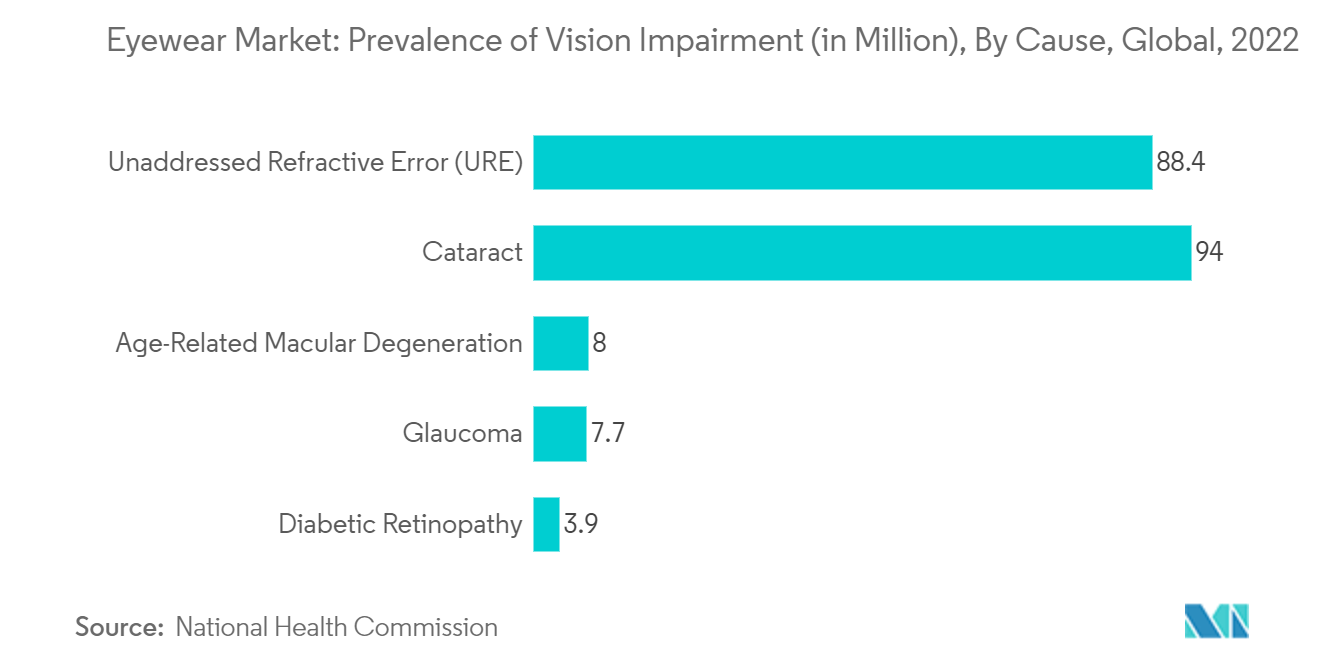Market Trends of Eyewear Industry
Growing Popularity of Sports Sunglasses
In the past decade, the prevalence of vision impairment has been higher among all age groups of the population owing to several factors, such as the development of cataracts, uncorrected refractive error (URE), and age-related macular degeneration (ARMD). According to World Health Organization data published in 2022, nearly 2.2 billion people have near or distant vision impairment globally. Thus, the higher incidence of optical deficiencies is further raising the demand for eyewear such as spectacles and contact lenses in the market. Similarly, visual impairment disproportionately affects the elderly. With advancing age, the normal function of eye tissues decreases, and there is an increased incidence of ocular pathology. The high prevalence rate of diseases, such as diabetes and hypertension, owing to lifestyle conditions is further known to aggravate the rates of blindness and visual impairment. The accelerating degradation of eyes is boosting the market sentiments of eyewear products.
On the other hand, factors such as increasing acute myopia at a younger age, increasing awareness, and growing middle class and rising disposable incomes are expected to contribute to sustained demand for the eyewear market over the forecast period. For instance, a study about the prevalence of myopia among children in China published by the National Health Commission in 2020 shows that 71.1% of middle school students and 80.5% of high school students have myopia. To rectify the deficiency, spectacles and contact lenses are widely used, propelling the growth of the market studied. The global marketplace has also witnessed a significant increase in the “capture rate” among adults, indicating a higher number of eye tests, which are converted into sales of eyewear products. In developed countries, around 70% of adults require corrective lenses to achieve proper eyesight. Thereby, the rising prevalence of various types of optical deficiency across the global population is accelerating the growth of eyewear products in the market.

Asia-Pacific Likely to Experience the Highest Growth
A paradigm shift has been observed in Asia-Pacific, where the consumer perception of eyewear is changing from function to fashion. Consumers in the region are buying eyewear as a fashion statement. This is attributed to the growing economy and increasing purchasing power. China is the world's leading manufacturer of spectacles and has the largest potential consumer base. It also has the highest population rate with myopia, suggesting a huge potential for the spectacles market. According to the National Health Commission, Chinese children and teenagers overall had a short-sightedness rate of 52.7% in 2020. The prevalence of myopia and children's educational attainment were closely related. Less than 15% of children aged six had the disease, compared to one in three elementary school children and four out of five high school students.
The major racing events in Thailand are organized by different international organizers, such as L'Etape Thailand. Such events are augmenting the demand for sports sunglasses, which both domestic and international participants require. According to the National Statistical Office (Thailand), approximately 1.5 million Thai adults between the ages of 25 and 44 participated in regular exercise and sports in 2021. In the same year, about five million citizens of the nation participated in sports and got enough exercise. Moreover, the popularity of tourist-favored recreational pursuits like skiing and scuba diving impacts the demand for sports eyewear in the nation.


